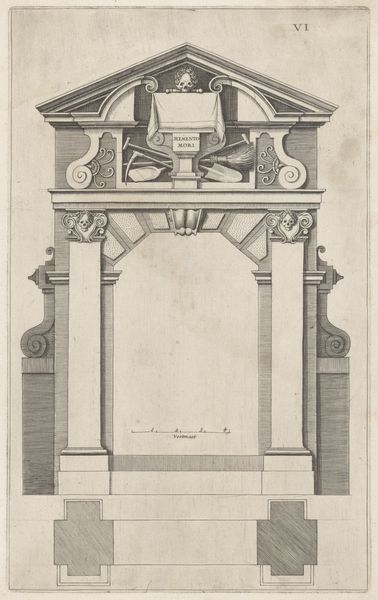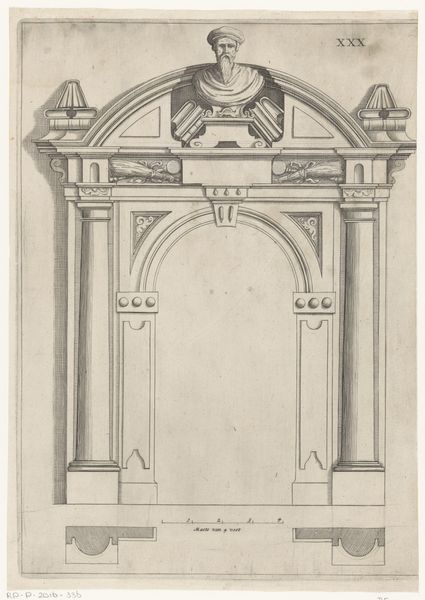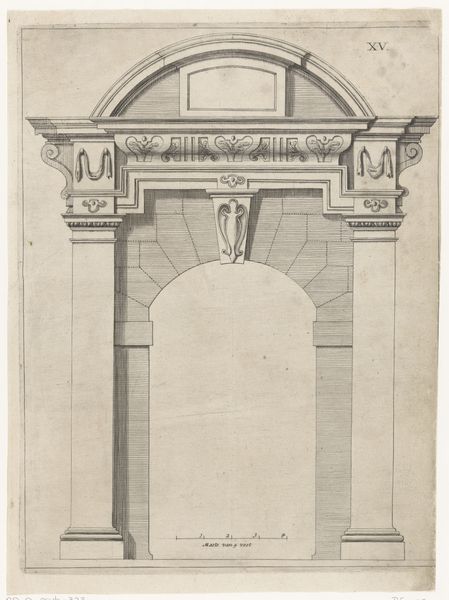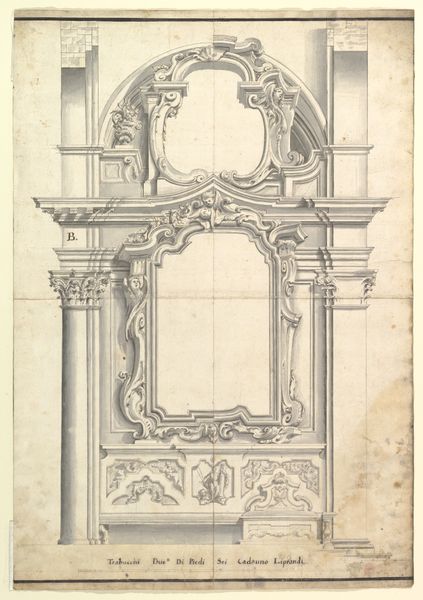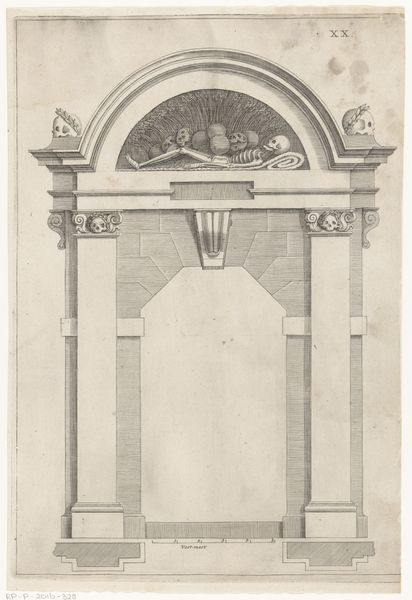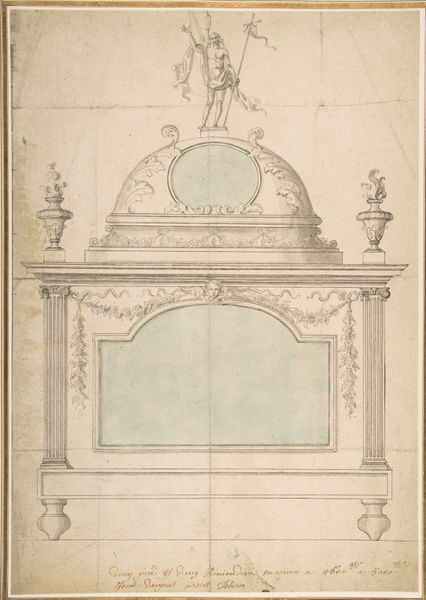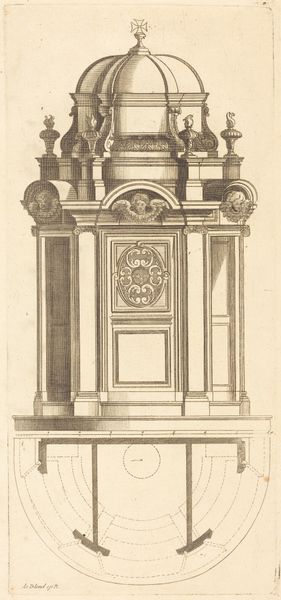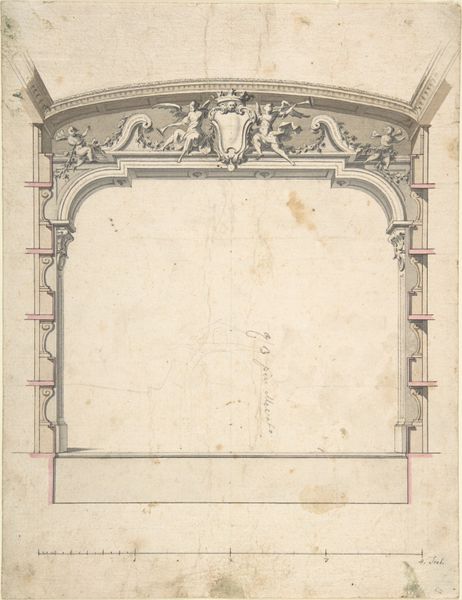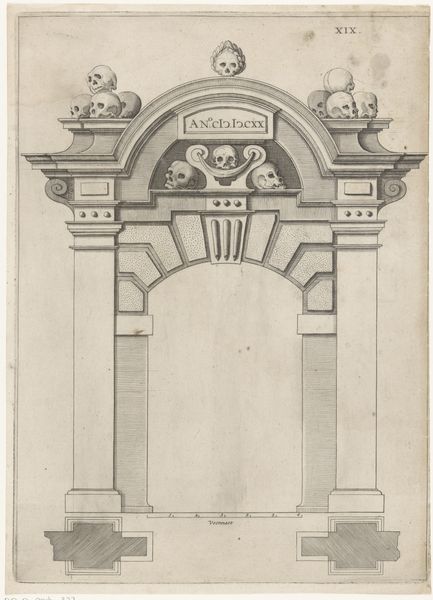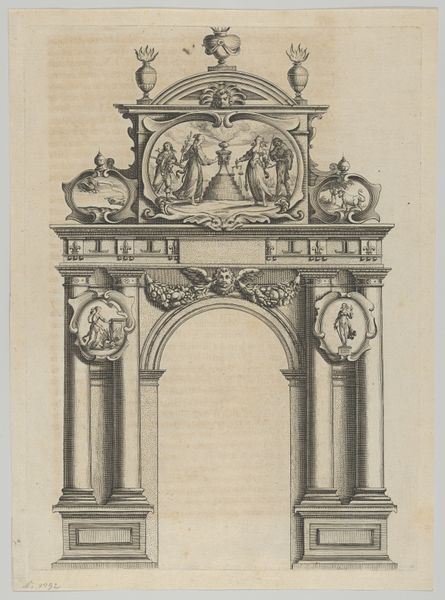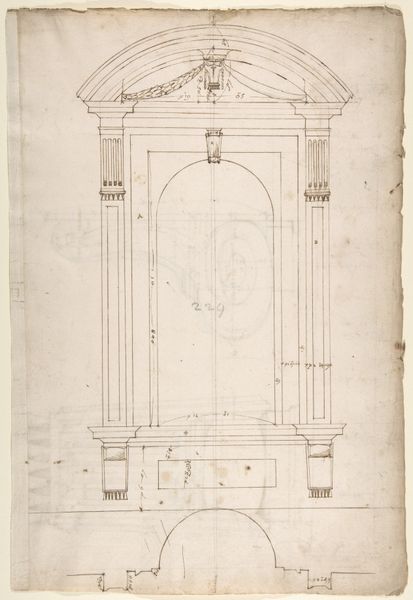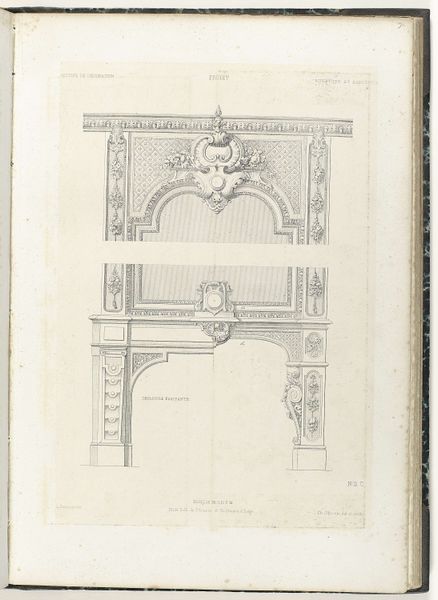
print, engraving
#
baroque
# print
#
old engraving style
#
landscape
#
vanitas
#
engraving
Dimensions: height 296 mm, width 192 mm
Copyright: Rijks Museum: Open Domain
Curator: The starkness is what grabs me. The composition feels incredibly rigid, almost architectural in its severity. Editor: Indeed. Before us, we have an engraving, "Poort tot begraafplaats bij de Zuiderkerk," dating back to 1631. Its maker remains anonymous. Given that this piece resides within the Rijksmuseum, its creation must represent Dutch sensibilities, baroque aesthetics and its relationship with urban design. Curator: The Zuiderkerk gate… It seems a rather morbid subject matter for the typically ornate Baroque period, wouldn’t you say? Two skulls positioned atop the gateway feel unusually macabre against such refined symmetrical flourishes. Editor: Well, keep in mind the prevailing artistic trends of the era. Consider, for instance, the vanitas tradition, reminding viewers of mortality and the transience of earthly existence. Such symbols frequently appear in Baroque works, acting as a counterpoint to displays of opulence and power. Curator: I recognize the symbolic intention; still, structurally, it feels quite bleak, like the image of this construction becomes one with a memento mori in itself. The repetitive, boxed arches surrounding the doorway feel almost… oppressive. Editor: I perceive your reading, but consider the print's socio-historical context within the context of burial ground iconography. It's possible this served a civic or memorial function within Amsterdam. Public displays intertwining architectural achievement with the inevitability of death served to both solemnize civic rituals and remind people about public virtue. Curator: The austerity is deliberate, an attempt to fuse symbolic weight and architectural elements? It’s an intriguing juxtaposition, but what implications can this have within the framework of its formal aesthetics and its urban landscape, exactly? The engraving itself remains, fundamentally, devoid of warmth or joy. Editor: Perhaps therein lies its strength. The print uses a familiar form—a gate, threshold—and transforms it into a potent meditation. Consider its original display context; placed perhaps in guildhalls, maybe distributed as a civic ordinance... In observing it now, within the modern institution of the museum, are we reinterpreting or preserving those original interpretations? Curator: A fascinating query regarding interpretation itself, to say the least. My thoughts? We are seeing what’s preserved. Editor: I agree and so its cultural transmission serves as an important signpost through historical analysis.
Comments
No comments
Be the first to comment and join the conversation on the ultimate creative platform.
